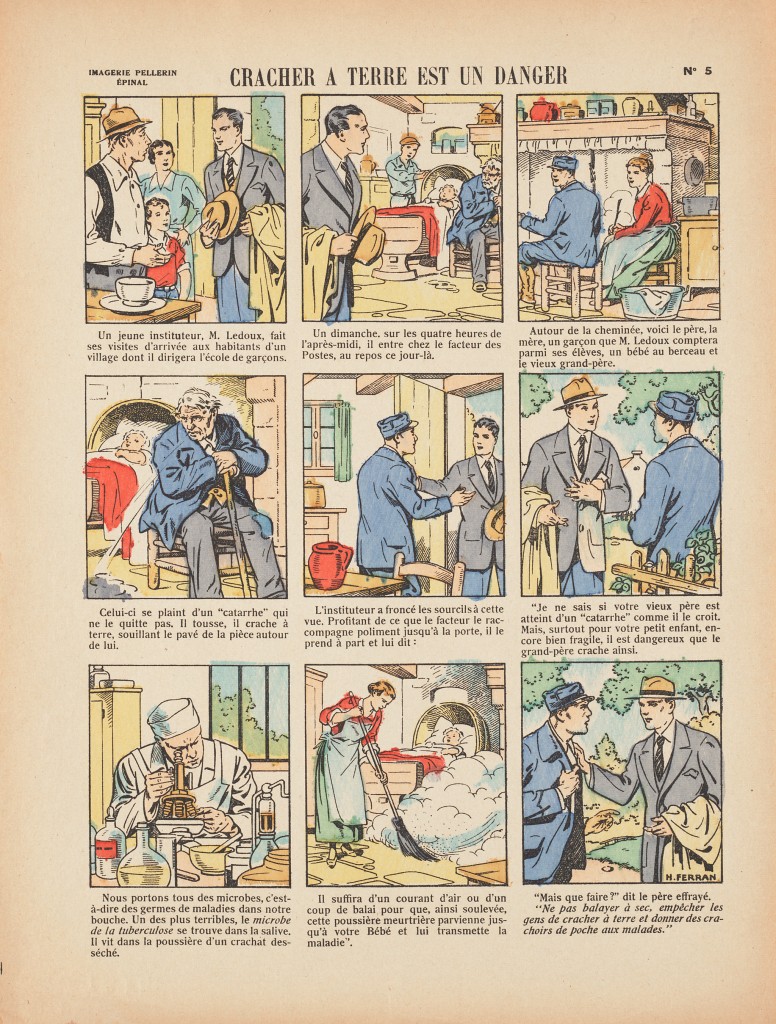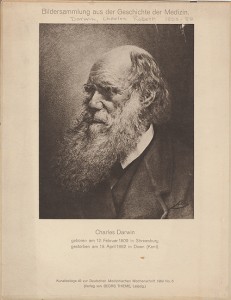World Tuberculosis Day fell yesterday, March 24th. The choice of date commemorates the day Dr. Robert Koch announced his discovery of the TB bacillus, Mycobacterium tuberculosis. In 1882, the year of Koch’s announcement, TB was responsible for seven million deaths.

Cracher à terre est un Danger. From the Osler Library Prints Collection.
This “image d’Épinal” is part of a series called “Propagande pour l’hygiène publique.” It was part of a wide campaign in the first half of the 20th century to sensitize the French public to tuberculosis and other infectious diseases, infant mortality, and alcoholism: the inevitable scourges that decimate humanity. “Images d’Épinal” were popular prints that illustrated traditional or country life. In this example, entitled “Cracher à terre est un Danger (Spitting on the ground is a danger),” a young instructor named Monsieur Ledoux visits a country home, where he is alarmed to see the sick grandfather spitting on the floor. He explains that tuberculosis germs are found in saliva and can be easily be transmitted through the air, as when the young wife sweeps the floors and sends up microbe-filled dust.
Monsieur Ledoux’s three crucial pieces of advice? Don’t sweep the floor when it’s dry, make sure people don’t spit on the floor, and give pocket spitoons to sick people.
Refs.
Robert Koch and Tuberculosis: Robert Koch’s famous lecture. December, 2003. Nobelprize.org.



